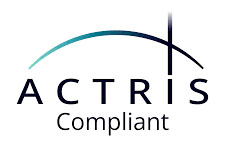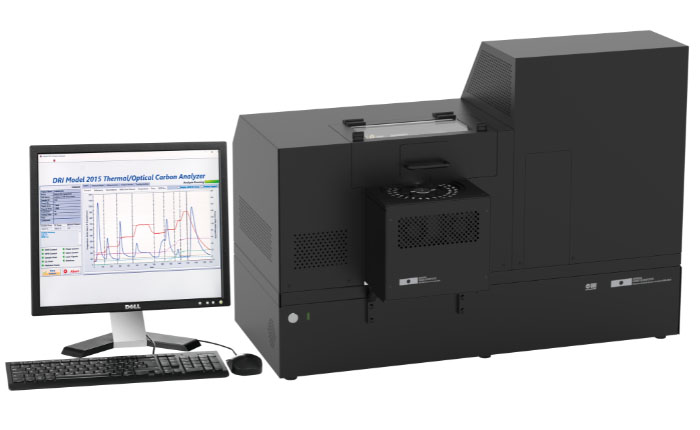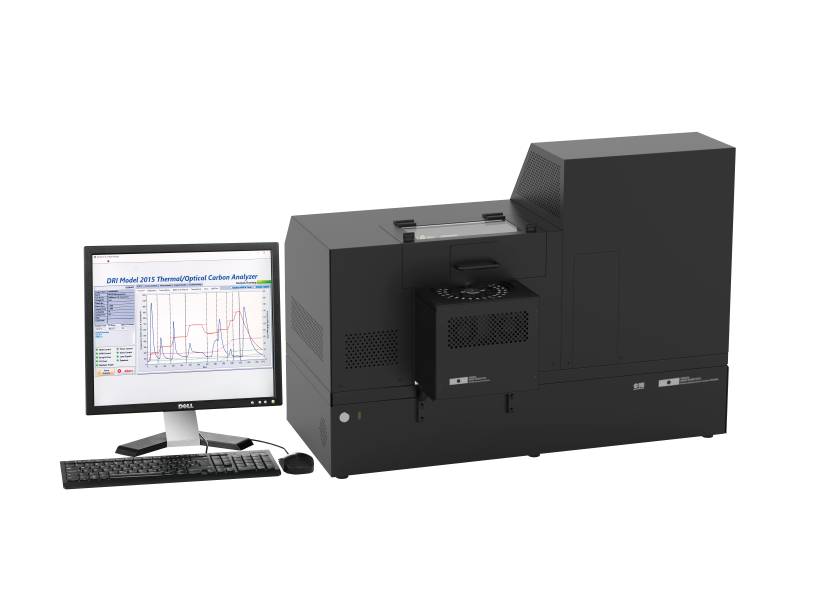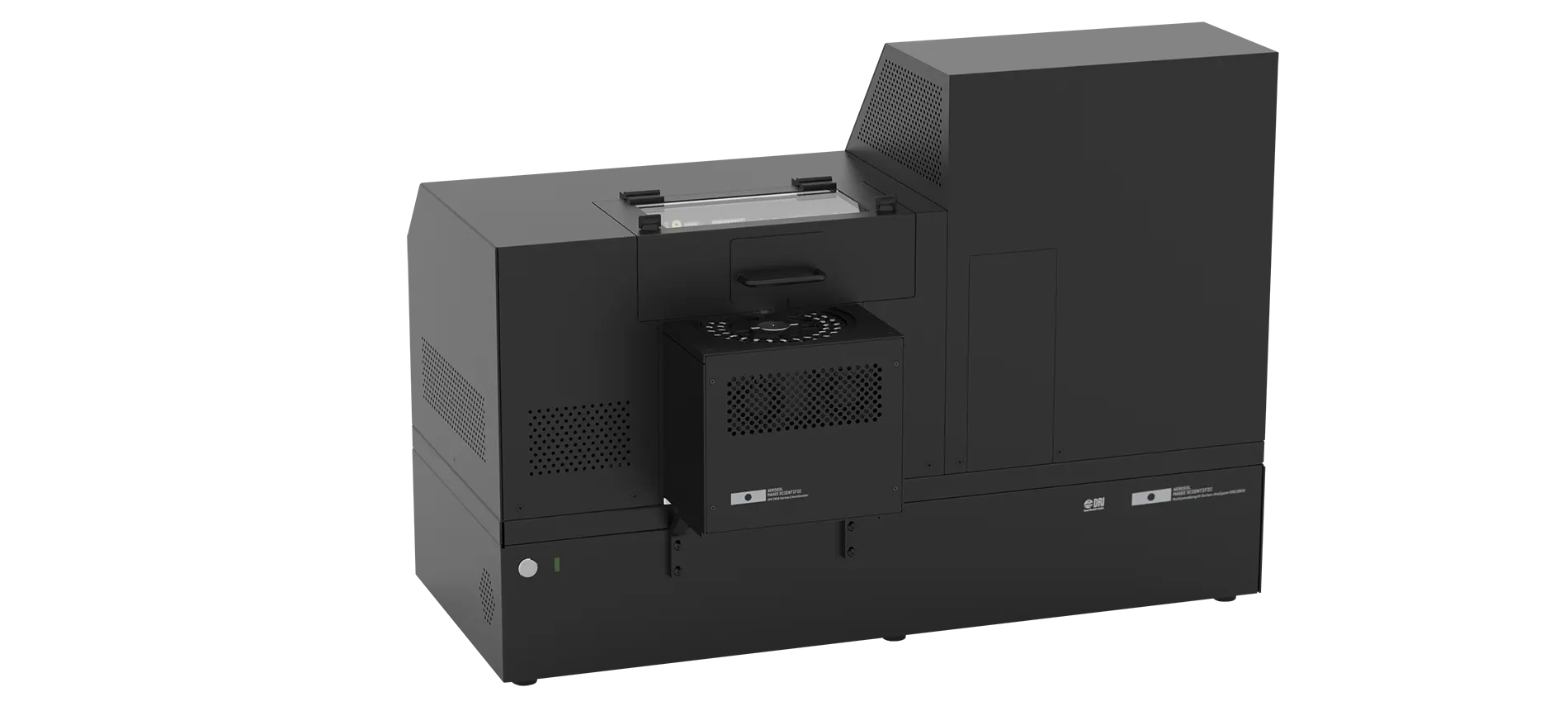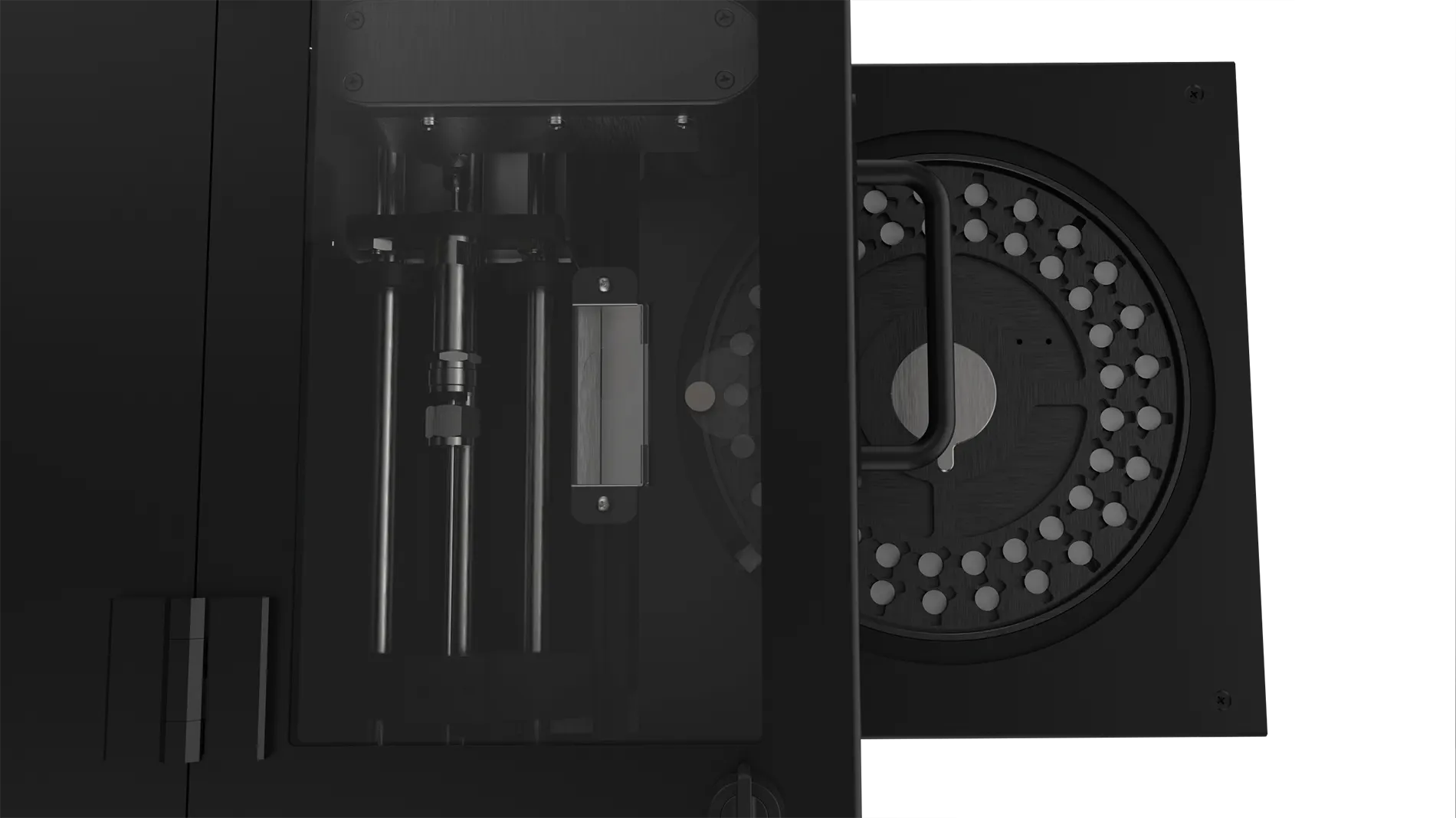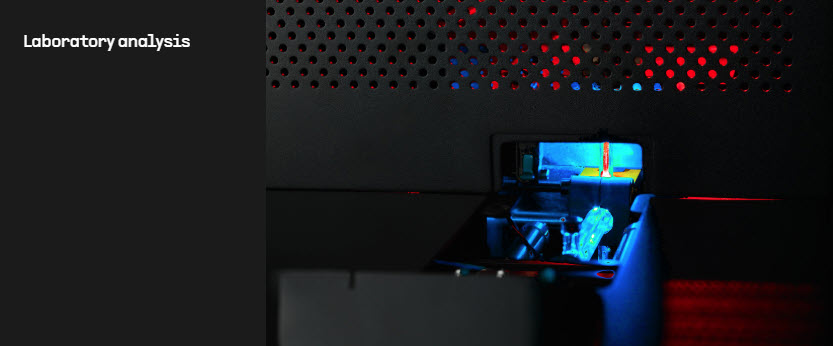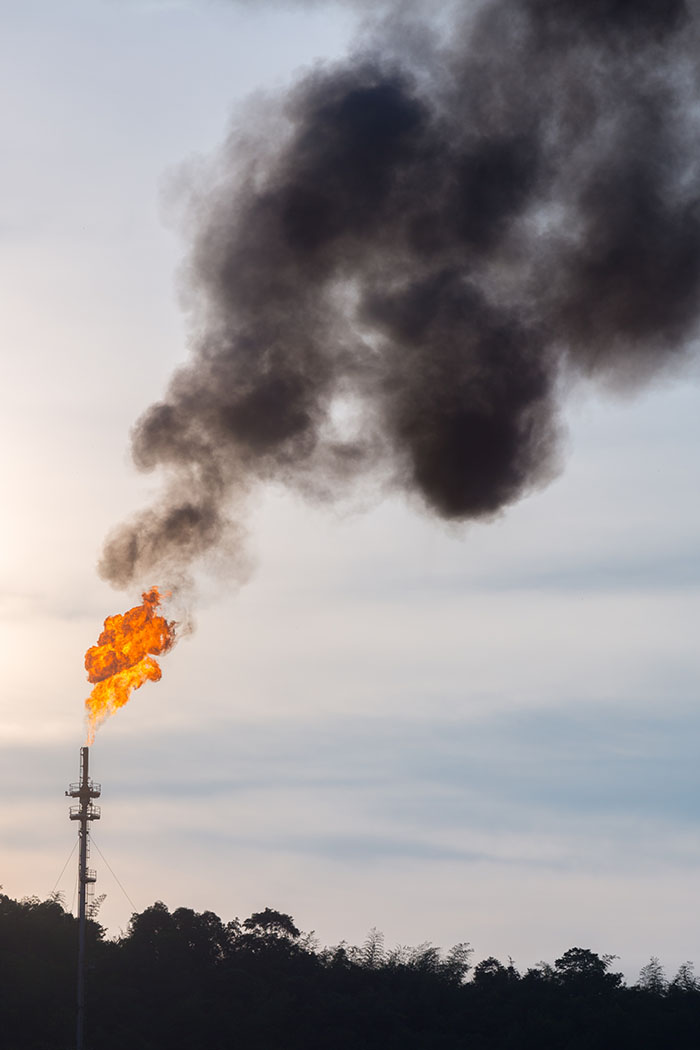7λ MEASUREMENT - OC/EC, BrC ANALYSIS
The DRI 2015 Series 2 Multiwavelength Thermal/Optical Carbon OC/EC Analyzer enhances the widely-used DRI 2001 and DRI 2015 systems for quantifying organic carbon (OC), elemental carbon (EC, also termed black carbon, BC), and temperature-separated carbon fractions on aerosol filter deposits (Chow et al., 1993). The DRI 2015 Series 2 retains the consistency of OC and EC data with measurements performed on previous models; while reducing costs of supplies and maintenance compared with the DRI 2001. Additionally, it also features CE mark.
DRI 2015 Series 2 replaces the 633 nm optical monitoring that accounts for OC charring with reflected (R) and transmitted (T) intensities at wavelengths of 405, 445, 532, 635, 780, 808, and 980 nm. The additional optical information can be used to estimate multiwavelength light absorption of the sampled particles, infer the concentration of brown carbon (BrC) in each sample, and further complement the use of carbon fractions in source apportionment studies (Chen et al., 2015; Chow et al., 2015). DRI 2015 Series 2 software includes temperature programs for commonly-used protocols such as IMPROVE_A (Chow et al., 2007; 2011), EUSAAR_2 (Cavalli et al., 2010), and NIOSH (Birch and Cary, 1996; Chow et al., 2001), and it can be programmed to emulate any other protocol. The simultaneous measurement of both R and T at all wavelengths throughout each analysis allows for reproducing any other thermal/optical method and holds potential for better characterizing additional properties of the carbonaceous aerosol.
